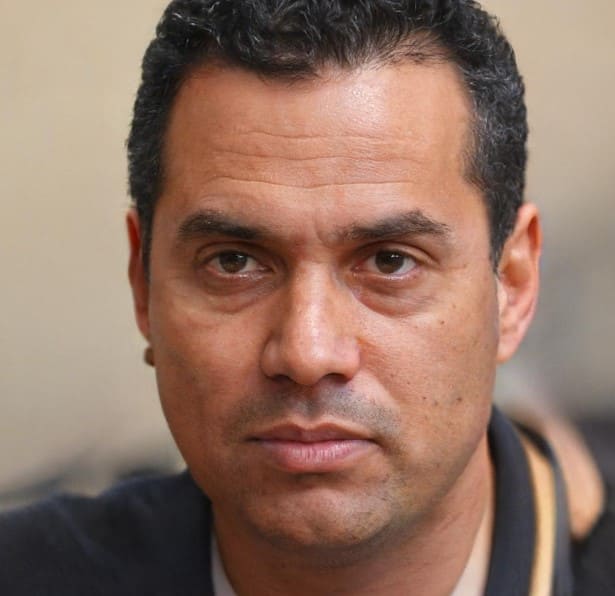
Toyota CEO Akio Toyoda recently let the climate change lobby blow a fuse when his fellow auto executives bravely told the truth about battery electric cars. "Like the fully self-driving cars we thought we were driving, BEVs will take longer to become mainstream than the media would have us believe," Toyoda said in Thailand. I think," he said. He added that the auto industry's "silent majority" also shared his views.</p><div> <p>The Biden administration appears to believe that if the government only throws in enough subsidies, millions of Americans will rush to buy electric vehicles. included $7.5 billion in grants to expand the But when even states are warning administrations that electric vehicles aren't ready to go mainstream, that's a problem.
In a plan submitted to the Federal Highway Administration this summer, Maine noted that "cold weather will continue to be the biggest adoption challenge," because "cold weather reduces EV range and increases charging time." will be,” he said. With temperatures down to 5 degrees Fahrenheit, the car can only achieve 54% of its rated range. A vehicle that should be able to travel 250 miles on a single charge can only travel 135 miles on average. At 32 degrees (a typical winter day in much of the United States), a Tesla Model 3 that can travel 282 miles in ideal conditions will do just 173 miles.
Imagine 100 million Americans driving electric cars while on vacation. How many people were stranded when the temperature plummeted? There wouldn't be enough tow trucks and paramedics for people frozen in their cars.
To reduce the likelihood of these scenarios, the Department of Transportation requires states to build charging stations every 50 miles along interstates and within one mile of off-ramps. But most state power grids weren't built to handle that many charging stations, requiring expensive upgrades. For example, Illinois warns of "challenges associated with adequate grid capacity, especially in rural areas of the state."
As many states have warned, charging stations in rural areas with low traffic can also be unprofitable and “lone assets.” Wyoming says he needs to increase traffic by non-Tesla electric vehicles out of state by a factor of 100 to cover the cost of chargers under government regulations. Tesla is already investigating prime charging locations for its own network. Good luck to your competitors.
New Mexico warns: If an EV charging station is built in an area that lacks the infrastructure to support its capacity and use, it will become unusable until the appropriate upgrades are installed. "
Arizona states that "a private company can build and operate a station if it is subsidized for operation and maintenance for the first five years," but it later proves to be unprofitable. If we find out, we may abandon the project. Many other states have echoed this concern, noting that federal funds could lead to stranded assets.
The government aims to build 500,000 stations, but states will have to spend their own money to maintain them. Like other federal incentives, these subsidies can entice states to shoulder what can be huge financial liabilities.
Federal funding comes with a number of regulations, such as a “Buy America” procurement requirement that requires chargers to be constructed mostly of U.S.-made components. New Jersey says these could "delay implementation by several years" because very few manufacturers can currently meet them. It said it would be difficult to comply with a series of federal regulations, including the Americans Act, the Uniform Relocation Assistance and Real Estate Acquisition Policy Act of 1970, and the federal law of 1960. A charging station at a rest stop.
Oh, and labor standards. The government requires electrical workers who install and maintain stations to be certified in the union-sponsored Electric Vehicle Infrastructure Training Program. Many in New Mexico say there is a shortage of contractors to meet this mandate, slashing competition and increasing costs.
There are also many technical issues. Virginia says the fast-charging hardware is "untested" and "prone to malfunction." "Equipment previously installed privately in Virginia was shown to have a high failure rate in user comments and social his media reports," "Credit his card compatible with his reader But it was unexpectedly complicated."
A study this spring led by researchers at the University of California found that more than a quarter of public DC fast-charging stations in the San Francisco Bay Area are out of service. Drivers play roulette every time they head to the station. Arizona warns that cyber vulnerabilities could put customers' financial transactions, charging infrastructure, electric vehicles and grids at risk.
As Toyoda warned, politicians and automakers are doomed to collide with technological, logistical and financial realities in their scramble to do away with the internal combustion engine. The casualties will be taxpayers, but the administration doesn't seem to care.
</div><p style="position: absolute;z-index:-1;top:0;left:-15000px;">Copyright ©2022 Dow Jones & Company, Inc. All rights reserved. 87990cbe856818d5eddac44c7b1cdb8</p>